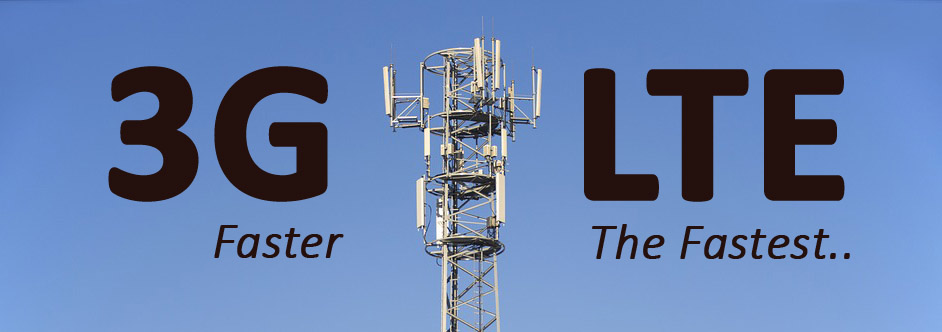3G / LTE Cell Planning and Analysis Workshop
5 DAYS
INSTRUCTOR LED WORKSHOP
“OUR COURSES CAN BE SPECIALLY TAILORED TO ADDRESS YOUR REQUIREMENT – TELECONTRAN”

COURSE OBJECTIVES
In the matter of mobile radio communication systems, RF Planning is the process of assigning frequencies, and parameters of a wireless communication system to provide sufficient coverage and capacity for the services required. Cell Planning and Dimensioning is critical context due to different services offered by 3G and LTE network. With the burgeoning of smart devices, M2M, social networking and location-based services, operators are seeing LTE data usage expansion as a generator of revenues and start focusing on the efficient cell planning of LTE network.
Telecontran’s 5-day 3G / LTE Cell Planning and Analysis Workshop significantly improves the understanding of the issues and techniques used to effectively plan an efficient and advanced 3G or 4G cellular network. Along with the up to date information on 3G, HSPA and 4G/LTE technology, participants will also be taught on 3GPP standards and its relationship with other 3G and LTE technologies.
After successful completion of this 5-day workshop participants will be able to
- Gain a thorough overview of 3GPP Architecture and 3G/LTE Interfaces
- Improve, optimize, and maintain network performances
- Explain network potential issues that might happen on the radio and BSS and the core network side
- Provide comprehensive knowledge of LTE radio planning techniques.
- Plan an efficient 3G/LTE Radio Network
- Learn 3GPP Security factors and necessary algorithms
- Gain a thorough understanding on SS7, SIGTRAN, SIP as well as IMS and its services
- Take advantage of the benefits and enhanced radio performance that 4G / LTE brings to the cellular operator in various scenarios.
COURSE CURRICULUM
This course is specially designed for Radio Network Planners, Project Managers, RF Engineers & Technicians and frequency spectrum and policy makers from Regulators.

Module 1: Overview of Telecom Network
- Mobile Communication
- Evolution of Mobile Communication
- GSM Network and its Architecture
- GSM Network Components
- GSM Protocols
- GSM Radio Interface
- R99 to R4 Evolution – the IP Core Network
- Core Network Nodes Details and Roles
- 3GPP Releases – Overview towards Rel.14
Module 2: UMTS System
- UMTS Introduction
- UTRAN Architecture
- Network Elements – Node B, RNC, MGW
- UMTS Radio Interface Details
- Interfaces – Uu, Iu, Iub, Iur
Module 3: UMTS towards HSPA
- From UMTS to HSPA/HSPA+
- HSPA Architecture
- Radio resource management
- Protocol architecture
- Impact on UTRAN interfaces
- Protocol states
Module 4: LTE / SAE Introduction
- LTE and SAE
- LTE Principles
- OFDM vs. single carrier
- Frequency and temporal diversity
- OFDMA and SC-FDMA
- TDD vs. FDD
- E-Utran
- EPC
- EPC Nodes and Interfaces
- LTE Nodes (HSS, MME, ENodeB, PCRF, PDN GW, SGW,EPDG)
- EPC Signaling and Protocols
- EMM/ECM Common Procedures
- Overview LTE.LTE-A UE Capabilities
Module 5: LTE Radio Propagation and Frequency Planning
- Channel models
- Multipath radio conditions- Delay, Doppler Spectrum, Multi-Antenna channel model
- Macrocell propagation model – urban case
- Macrocell propagation model – rural case
- OFDM channel models – ITU proposal
- Channel Allocation
- Multiple Reuse Patterns
- Reuse Partitioning
Module 6: LTE Cell Planning
- Uplink Noise considerations
- Uplink Link Budget
- Downlink Noise considerations
- Downlink Link Budget
- Cell tuning principles
- Tuning macrocell scenarios
- Cell coverage analysis and verification principles
- Overshooting & cell border analysis
- Tuning hot-spot scenarios
Module 7: LTE Capacity Planning
- Data traffic modeling
- Air interface capacity estimation
- Backhaul capacity planning
- Cell and eNB quantity
- Factors impacting capacity
- Planning tool simulations
Module 8: LTE KPIs
- Accessibility KPI
- Retainability KPI
- Mobility KPI
- Integrity KPI
- Availability KPI
- Utilization KPI
Module 9: TCP/IP
- TCP/IP Overview and Description
- IPv4 vs IPv6
- TCP/IP Protocol stack description
Module 10: SS7 Signaling and SIGTRAN
- SS7 Signaling overview
- SS7 Protocol stack description
- SS7 Signaling in UMTS and LTE
- CAMEL (Customized Applications for Mobile networks)
- Enhanced Logic Protocol description
- SIGTRAN- SS7 Signaling over IP networks
- SIGTRAN Protocol stack description
Module 11: Session Initiation Protocol (SIP)
- SIP Basics and SIP Multimedia Session setup
- SIP Signaling and Call Flow
- SIP operation
Module 12: The 3GPP Security Architecture
- UMTS Security
- Security Algorithms in UMTS – the MILENAGE set
- Security procedures and parameters for authentication and encryption
- LTE/EPC Security Procedures
- Authentication, Non-access stratum security and access-stratum security
- Security Algorithms for EPS: SNOW 3G and AES
- Re-keying procedures and key generation for handovers
- Security Aspects for the EPC components
- SIP Security Aspects
Module 13: Functional Split between E-UTRAN and EPC
- E-UTRAN and EPC vulnerability aspects
- Services with EPS
Module 14: IMS
- The IP-Multimedia System (IMS) reference architecture
- IMS functions and basic operation
- IMS Services
Module 15: LTE Application and Services
- Discussion on potential services: VoLTE, VoWIFI, IP-TV, Instant messaging, presence services, etc.
- IoT over LTE: benefit or compromising security
- LTE-advanced: Carrier Aggregation and small cells.
- Networking configurations: Software Defined Networking (SDN) and Network Function Virtualization (NFV)
Module 16: Introduction to 5G
- 5G Debates
- 5G Researches
OUR HAPPY CLIENTS
WHAT OUR CLIENTS SAY ABOUT TELECONTRAN !!
The trainer explained LTE, LTE cell planning and 5G technologies in extremely interesting manner and I must say that the discussion during the workshop was simply excellent.
A lot of discussions were there during the workshop and the trainer shared his knowledge and experiences in Cell planning along with LTE KPIs which was very much informative for our company.
Excellent introductory course presented by an excellent instructor who was so engaging and supportive that I did not hesitate to ask questions; His answers and presentation was great and understandable.
Very well delivered course that clearly explains the 4G and beyond technology.
Good explanation with all the information related to LTE Evolution to beyond 4G, 4.5G network and the Evolution towards 5G network and graph on powerpoint.

